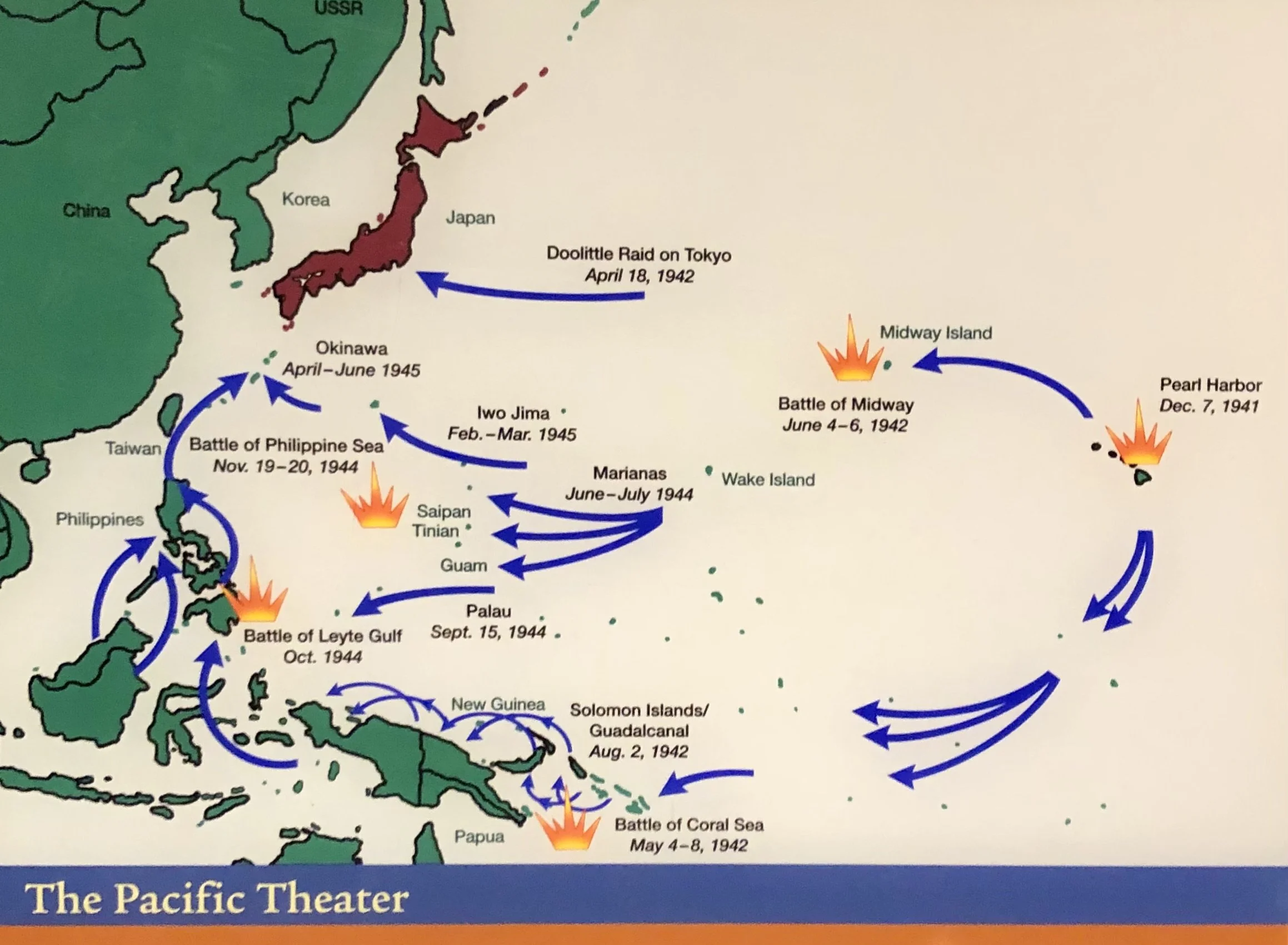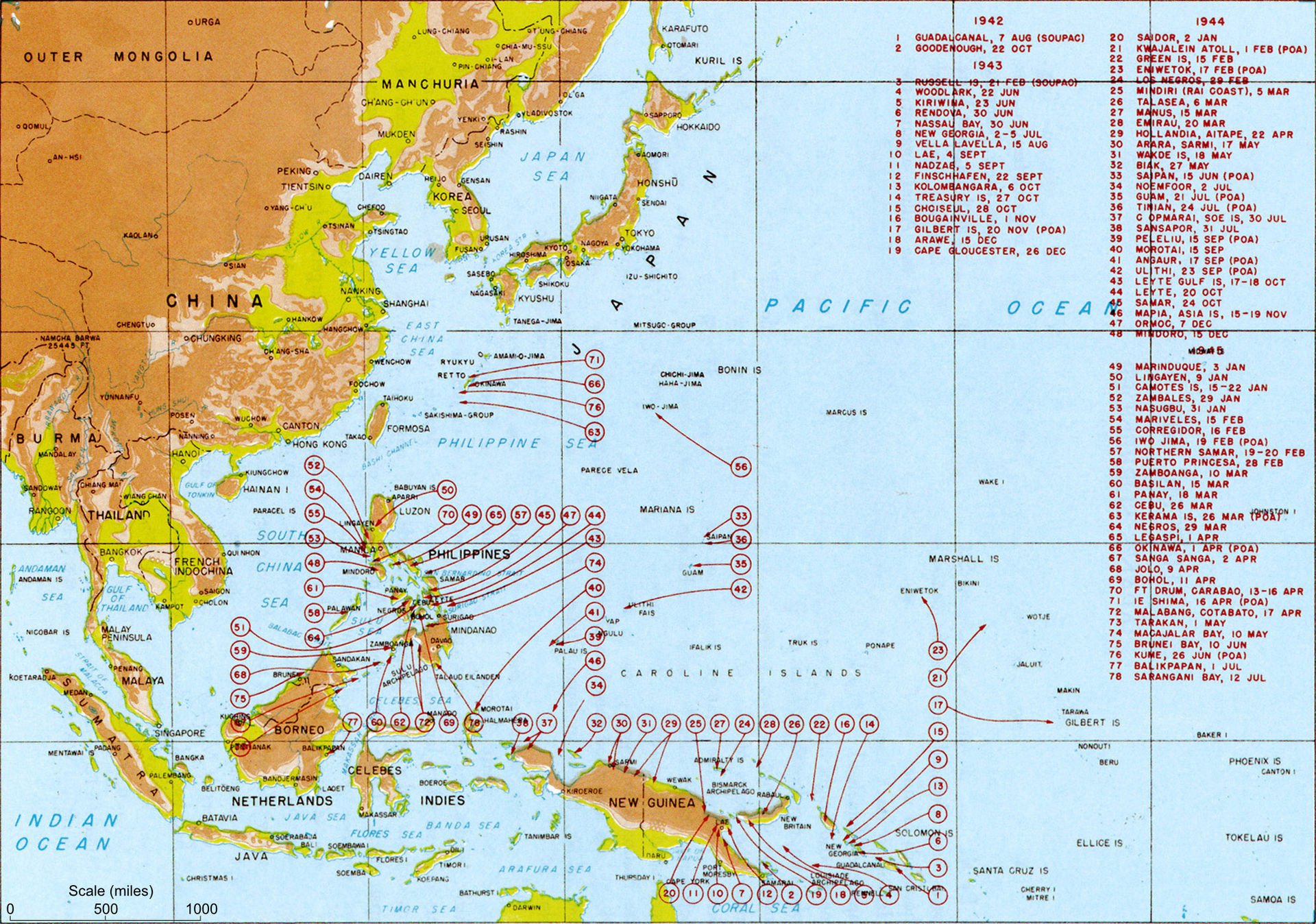100 Years of Sea Power by Baer
Ref: George Baer (1995). One Hundred Years of Sea Power. Naval War College Review.
_________________________________________________________________________________
Summary
Japan’s Great Gamble; Japanese strategy, chronology, success, and failure of in the Pacific Theater of WWII.
SECSTATE Cordell Hull states that the US wants a pluralistic international order based on 4 liberal principles: territorial integrity and sovereign independence, noninterference in the domestic affairs of other states, equality of commercial opportunity, and non-disturbance of the status quo in the Pacific by other than peaceful means. The US and Japan sought radically different political order for Asia. Japan wanted imperial command of Northern China and SE Asia.
For a serious long-term settlement, Japan needed to expel the British, the Dutch, and the Americans from East Asia. The opening moves were clear enough: a simultaneous attack by the Navy on Hawaii and the Army on the PI and Singapore, to be followed by an army assault on the Dutch East Indies. When the bastions of American, British, and Dutch opposite were destroyed, Japan would consolidate its defensive perimeter, cut the West's communications to Asia, pluck the West's remaining and exposed colonial dependencies, destroy the paths of support to China, and enjoy the benefits of German victories in Europe, which would force both the Soviet Union and the US to face away from Japan.
Yamamoto thought if an initial victory were decisive and costly enough…it might discourage an all-out campaign in the Pacific.
Japan v. the ABCD countries: America, Britain, China, Dutch.
War Plan Orange: Get the fleet out to the Western Pacific, establish Sea Control, and defeat Japan through blockade.
_________________________________________________________________________________
US WWII Maritime Strategy
War Plan Orange: Get the fleet out to the Western Pacific, establish Sea Control, and defeat Japan through blockade.
Rainbow 1: Defense of the western hemisphere against an Atlantic threat.
The Pacific campaign would begin in the Solomon's, its aim being first to stop the Japanese and then to turn them back so they could not consolidate a force on New Guinea for the invasion of Australia.
From the beginning of the war, the goal of American operations was to destroy the center of Japanese industrial and political strength, which lay between Tokyo and Shimonoseki.
Port Closures using Air Delivered Naval Mines.
Mobile Logistic Bases.
Unrestricted Submarine Warfare
US Subs sank 201 Warships, a third of all those sunk by the American Forces during the war.
Campaign of Attrition against the Japanese Economy, US submarines sank 1,113 ships of the Japanese merchant marine.
_________________________________________________________________________________
Why Japan Lost
Japanese Prime Minister General Tojo Hideki:
Destruction of Shipping by US Subs.
Strategy of bypassing island strongholds.
Ability to self-supply fast-carrier forces so that protracted operations could be conducted without returning to base.
Japan's productivity could not have kept pace with America's, and that is the essential fact of the war. During the war, the US produced 11x as much coal as Japan, 222x as much oil, over 13x as much steel, almost 40x as many artillery, shells, and so on.
Air bases did not constitute an impenetrable palisade unless a navy held local command.
Not to take full control of the Indian Ocean at the outset was one of Japanese greatest strategic mistakes.
Japan's enormous Ocean Perimeter: 14,200 miles.
_________________________________________________________________________________
Misc Quotes
War's begin when one state tries by force to change a power relation and another state opposes that attempt by force.
There is always a long-standing gap between diplomacy and military preparation.
War with the US was out of the question! To fight the US is like fighting the whole world.-Japanese Admiral Yamamoto.
Crusade in Europe.-Ike.
Holy mission in the Pacific.-MacArthur.
_________________________________________________________________________________
Chronology
15 Aug, 1945: VJ Day. Japan unconditionally surrenders to the USA officially ending WWII.
The emperor decided that his direct intervention was necessary to prevent Japan's cultural suicide, its material destruction, and its social and religious collapse.-100 Years of Seapower by Baer.
May, 1945: JCS Plan against Japan.-100 Years of Seapower by Baer.
Apply full unrelenting pressure against Japan by strategic bombing and carrier raids in order to reduce war-making capacity and to demoralize the country, in preparation for invasion.
Tighten blockade by means of air and sea patrols, and of air striking force and light naval forces to include blocking passages between Korea and Kyushu and routes through the Yellow Sea.
Conduct only such contributory ops as are essential to establish the conditions prerequisite to invasion.
Invade Japan at the earliest practicable date.
Occupy such areas in the industrial complex of Japan as are necessary to bring about unconditional surrender and to establish absolute military control.
The final assault could be by blockade, as the Navy thought would suffice; by bombing, as the Army Air Forces preferred; or by invasion, as the Army thought would be necessary.
Mar, 1945: Strategic Bombing of Japan; the new commander of XXI Bomber command, Major General Curtis LeMay changed the targets of aerial bombing from industrial targets to urban areas at large, to undermine the civilian morale. Tactics became maximum-effort incendiary strikes from low altitudes (using fire bombs).-100 Years of Seapower by Baer.
Mines dropped closed port after port, a contribution to sea control that yielded what Nimitz described as "phenomenal results.”
25 Oct, 1944: Battle of Samar: First use of Kamikaze.
Oct, 1944: Battle of Leyte Gulf
Initial Stage of the return to the PI
In Tonnage engaged and space covered, the greatest naval battle of all time.
Japan lost 68 warships (3 battleships, 4 carriers, 10 cruisers, 9 destroyers). Americans lost 1 light carrier, 2 escort carriers, 2 destroyers, and 1 destroyer escort.
Finally and Thoroughly destroyed the offensive power of the Japanese navy.
July, 1944: Battle of Saipan
After the fall of Saipan in July, 1944, General Tojo Hideki resigned as Army chief of staff and prime minister. The government that replaced his, charged with reconsidering Japan's position, elected to continue the war. It decided that the political fabric of the country could not sustain the humiliation of surrender. The senior statemen feared a revolution more than they feared a military defeat.-100 Years of Seapower by Baer.
1943: only 3 Aircraft Carriers are under construction in Japanese Yards, while 22 are being built in the US; Japan's aircraft production is only 20% of Americas.-100 Years of Seapower by Baer.
7 Dec, 1941: Japanese Carrier Aircraft attack the US Western Fleet moored in Pearl Harbor, Oahu.
Quick recognition of carrier’s offensive value followed the entirely unpredicted decisive destruction of the battle line at Pearl Harbor by planes from six Japanese aircraft carriers in the largest carrier strike launched up to that time.-100 Years of Seapower by Baer.
26 Nov, 1941: Hull's decision to break off negotiations and to give Japan a set of demands (interpreted as an ultimatum in Tokyo), the major item of which was to withdraw from China (an impossible condition for the Japanese Army), was a shock to the US military and has received much criticism.-100 Years of Seapower by Baer.
Apr, 1941: SECSTATE Cordell Hull states that the US wants a pluralistic international order based on 4 liberal principles: territorial integrity and sovereign independence, noninterference in the domestic affairs of other states, equality of commercial opportunity, and non-disturbance of the status quo in the Pacific by other than peaceful means. The US and Japan sought radically different political order for Asia. Japan wanted imperial command of Northern China and SE Asia.-100 Years of Seapower by Baer.
Summer, 1940: The signing of the Vinson's two ocean navy bill, staff talks with the British, the destroyers for bases deal (the UK receives US destroyers while the US receives basing rights in Newfoundland, Bermuda, and Trinidad), the draft, the beginnings of the arsenal of democracy, the positioning of the fleet at Hawaii, the embargo on the export of scrap iron and steel to Japan.-100 Years of Seapower by Baer.
1940: Japan renews its ties with the axis powers in the hope that a new connection, the Tripartite Pact, might lead to a rapprochement with the Soviet Union, Germany's new treaty partner. Soviet Friendship would serve as well as the lost policy of constraint to secure the Northern border of Manchuria and free Japan for Southward Expansion.-100 Years of Seapower by Baer.
1929: Fleet Problem IX establishes "the carrier as a separate offensive striking force, as the center of a new tactical formation.-100 Years of Seapower by Baer.
1920's: The US Navy converts boilers from coal to oil. Oil improved speed and lightened the fuel load.-100 Years of Seapower by Baer.
_________________________________________________________________________________


